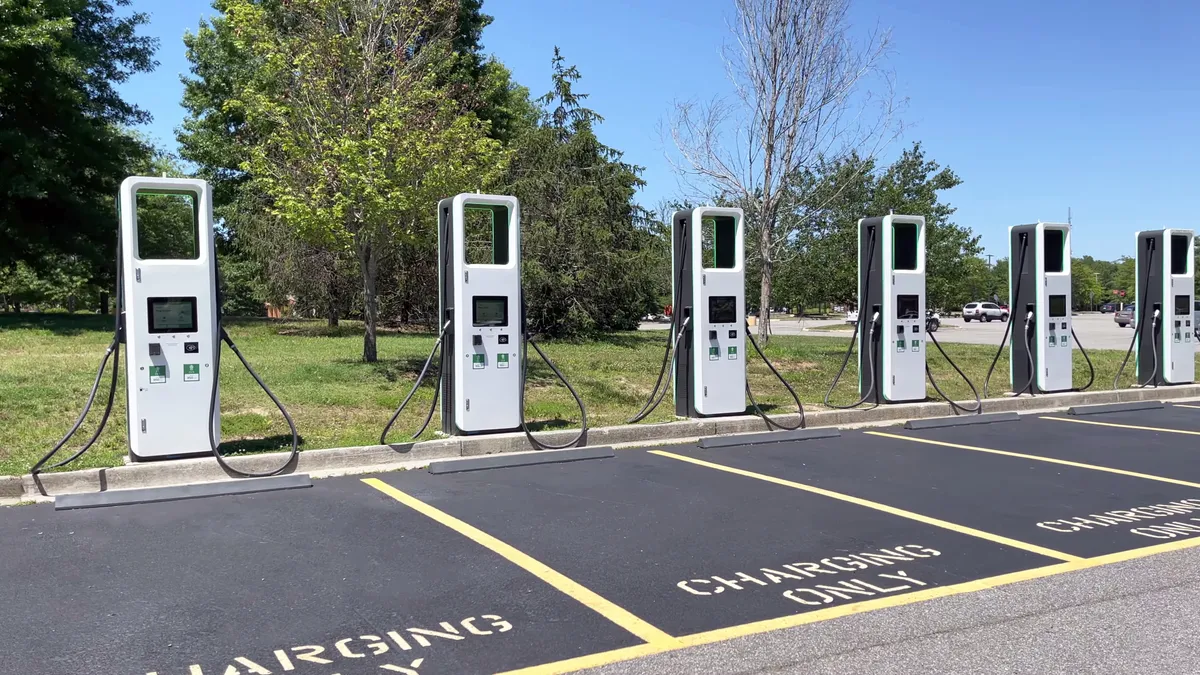The village of Colonie in Albany County, New York, had its first electric vehicle charging station installed in 2013. In the decade since, EV use has soared in Colonie and across the country, driving demand for more and more EV charging stations.
However, a complex web of regulations can make it difficult for local governments to support the installation and operation of EV chargers, as rules vary significantly by city and state. Moreover, many outdated policies remain on the books because policymakers haven’t revisited them since EVs gained a foothold in the car market.
For instance, while local governments establish permitting and zoning laws, states set most building codes. That means the implementation process “looks different in different places,” said Ben Shapiro, a manager with RMI’s carbon-free mobility team. Charging companies may “have to relearn how the process in each city works every time they go to do a new project, [which] can make it pretty challenging to be able to scale the business and move quickly.”
To simplify EV charging station implementation, Colonie reached out to the Capital District Transportation Committee, a metropolitan planning organization in upstate New York, for help determining how it may need to change its zoning regulations. Jacob Beeman, a senior transportation planner with the Committee, said that improved regulations make it easier for developers to “know what they’re getting into.”
According to a report prepared for Colonie by the Capital District Regional Planning Commission and others, there are some best practices that local governments can follow to support EV charger deployment:
- Adopt zoning language that explicitly defines EV charging requirements, such as EV charging levels, and does not unnecessarily restrict its installation.
- Establish building regulations that require the installation of EV chargers in new developments or require developers to pre-wire new buildings for EV chargers to reduce installation costs in the future.
- Create a consistent, low-cost permitting process for residential and commercial EV charger installations.
- Standardize EV parking signage throughout the community.
Colonie still needs to update its regulations, which do not mention EV charging, but developers have voluntarily installed EV charging in Colonie anyway, said Beeman, pointing to state incentives that allow stations to be installed at little to no extra cost.
But what about in other states where those incentives may not exist, or voluntary action is uncommon?
EV-ready regulations are sometimes controversial in Texas, according to Lori Clark, program manager at the North Central Texas Council of Governors. The construction industry believes EV charging requirements may add extra costs, though Clark noted that installing an EV electrical system during construction costs “pennies on the dollar” compared with installing it after the fact. Clark also pointed out that it’s tougher for Texas — with no revenue from a state income tax — to offer state incentive programs.
Still, that hasn’t stopped Texas cities from installing charging stations.
“We’ve seen an increasing momentum in how many charging stations are being built, [including in] communities that have never had them before,” said Clark. “Big cities have had charging stations for years and years,” she said.
For instance, Dallas allows but does not mandate that 10% of required parking spaces have EV charging. Now “smaller communities are [pursuing charging] projects for the first time,” Clark said.
Suzanne Goldberg, director of policy at EV charging company ChargePoint, said that city policies focusing on EV-ready ordinances, streamlined permitting and municipal fleet electrification are some of the more impactful changes cities can make.
“At the city level, there’s a lot of opportunity to really affect the transition to [electric] mobility,” Goldberg said. Whether people are looking to charge EVs at home, work or around the city, “we need policies that focus on making it easy for everyone to charge,” she said.
Beeman said that more local governments may soon update their policies to ease EV charger deployment to take advantage of newly available federal funding for EV charging infrastructure. Until then, cities should consult constituents, community organizations, other local governments, utilities, planning organizations, industry experts and others to understand what’s needed in a specific community before changing policies, Beeman said.
Supporting EVs entails “so much more than transportation planning” because the process involves a wide range of issues and stakeholders that “maybe didn’t work together in the past,” Beeman said.











